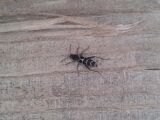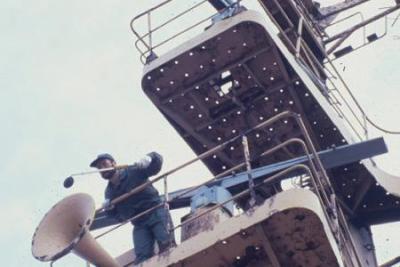This weekend it was unseasonably warm at my house. Sunny, gorgeous, high around 65. We recently had an arborist cut down a few trees that were leaning hazardously towards our house, so there is a lot of firewood in our yard waiting to be neatly bucked and stacked. I was playing outside when it hit me.
Literally.
A large beetle flew out of a log and smacked me in the shirt, hard. Being the head of Don't Move Firewood, I knew to immediately capture this beetle and stick it in a jar so I could look at it. Sure enough, it was a native beetle that had just emerged from the wood. The coolest part was that I could actually see fresh 'sawdust' that the beetle had kicked out as it emerged from a neat little hole clearly visible between the bark and heartwood. Pretty fantastic to see that in action!
On Monday, when I sat down in my office, I was going to tell you all about this, but then I got this email, and here's what happened next…
Dear Don't Move Firewood,
I bought a cord of wood from a local guy this past fall. I put the wood on my back deck on a metal firewood rack. The other day I saw a number of bugs on the left over wood. Someone told me they are longhorn beetles. Should I be concerned that they may end up in my deck or house? Should I move all the wood farther back on my property or just burn everything now?
Thanks,
Jack in Ohio
To keep a long story short, Jack and I corresponded a bit, and he ended up sending me a photo that quite clearly is not the Asian longhorned beetle.The antenna are far too short, and the stripes are very different from ALB. Also, even in Ohio, the last week of April is a pretty unlikely time for an ALB to be found outside because of their life cycle (much more likely in later May, or June or July).

A happy ending. His local firewood (thank you!) doesn't have ALB in it! Win-win.
Of course, if you want more information on the ALB in Ohio, here you go:
https://asianlonghornedbeetle.com/where-is-it/ohio/




